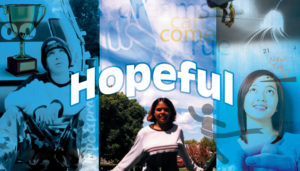
When a family reconnects
Posted: 25/11/2019—an interview with Steve Phillis, social work educator and senior practitioner
The importance of creating pathways for young people to reconnect with school life in a positive way is reflected in the title of a community-based early intervention and prevention service simply called the ‘Reconnect Program’.
This program is for young people aged 12 to 18 years (or 12 to 21 years in the case of newly arrived youth) who are homeless or at risk of homelessness, and their families. Young people often come to the program needing support around a range of issues, including non-attendance at school, truancy, low self-esteem, and poor connections. Family issues may also be affecting a young person’s capacity to connect with school life.
Steve Phillis, formerly a senior Reconnect worker and family services manager, and now a social work educator at Bendigo TAFE said, ‘The Reconnect Program uses a solution-focussed approach that respects the young person’s uniqueness and complements the skills of that particular individual and their school, family and community.’
Steve recounts a story of how he carried a pack of Reflexions cards around with him so that he could experiment spontaneously with them as the opportunity arose.
Steve said, ‘I was working with a young person who had been falling behind in her work, had low self-esteem and few friends, and was now refusing to attend school. Our second visit occurred in her family home, together with her mum, dad and sister.
‘I scattered the cards on the floor of the lounge room and my first question was: Would you like to pick out three to five cards which may reflect how school is for you at the moment?’
OK Dad, pick a card!
‘The young person’s father showed a lot of interest in the cards, so I said; “OK Dad, pick out some cards that reflect how you feel at work!” This stimulated lots of discussion, broke down boundaries and really loosened us all up. Very soon the sister also picked out some cards. It was so great when this happened because it helped to normalise what the young person was going through.
‘The young person then selected four cards that represented how she felt about school. She selected Frustrated, Different, Lonely and Sad. We placed these to one side in a column and then I asked her to think about the exceptions to these. Was there anything good or even a bit OK about school?
‘She then chose four more cards that reflected more positive moments (or even seconds!) at school. These were Easy Going, Excited, OK and Brave. We placed these in a column and talked about each of these little positive glimpses. We then returned to the first set of cards she had selected and explored these “negatives” for a while.’
 Moving towards solutions
Moving towards solutions
‘I then asked her to select cards that represented how she would like school to be. These cards framed the goal for our work together; they represented where we are heading. The three cards she selected were Happy, Hopeful and Fun.
‘We placed these in a column also and then I asked her, “Can you see a card that will help you make a transition from here (indicating the first column) to here (the last column)?” She selected the Able to Change card. We then looked at concrete things that we could work on together to address the present frustrations, to foster more of the positive moments, and to build towards the final goals.
‘I really enjoyed the sense of connection with the whole family that arose through the process of working with the cards. And speaking of connection, there was an extra sense of fun when the young person in question recognised some of the faces shown on the Reflexions cards!’



Leave a Reply